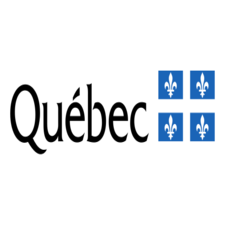Canopy
Type of resources
Topics
Keywords
Contact for the resource
Provided by
Years
Formats
Representation types
Update frequencies
status
Service types
-

Cartography of the vegetation cover of Quebec City. The canopy represents the projection on the ground of the tops (crown) of trees (including leaves, branches, and trunks), which is visible from the sky. The data comes from two satellite images covering Quebec City taken by the Pléiades satellite pair on June 24 and July 13, 2015 (spatial resolution of 50 cm).**This third party metadata element was translated using an automated translation tool (Amazon Translate).**
-
NLCD 1992, NLCD 2001, NLCD 2006, and NLCD 2011 are National Land Cover Database classification schemes based primarily on Landsat data along with ancillary data sources, such as topography, census and agricultural statistics, soil characteristics, wetlands, and other land cover maps. NLCD 1992 is a 21-class land cover classification scheme that has been applied consistently across the conterminous U.S. at a spatial resolution of 30 meters. NLCD 2001 is a 16-class land cover classification scheme that also has been applied to the conterminous U.S. at a spatial resolution of 30 meters, and includes Alaska, Hawaii, and Puerto Rico. NLCD 2006 quantifies land cover change for the conterminous U.S. between the years 2001 to 2006. Generation of NLCD 2006 helped identify and correct issues in the NLCD 2001 land cover and impervious surface products only, and no changes were made to the NLCD 2001 canopy product. For additional information, go to http://www.mrlc.gov/. See http://viewer.nationalmap.gov/help for assistance with The National Map viewer, services, or metadata.
-

Extent of plant cover formed by trees on the territory of the City of Montreal. The canopy is the summation of the projections to the ground of each tree crown or group of trees over 3 meters in height. It is represented on surfaces, even for isolated trees. No cells are used in this layer.**This third party metadata element was translated using an automated translation tool (Amazon Translate).**
-

Location and characterization of trees in the City of Repentigny.**This third party metadata element was translated using an automated translation tool (Amazon Translate).**
-

The numerical canopy model (MNC) is a representation of the altitude of the canopy. This 3D representation of the arboreal vegetation corresponds to the 2015 2D canopy. If necessary, the MNC can be coupled with the [Numerical Surface Model (MNS)] (/city-of-montreal/numeric-surface-model) 2015 in order to obtain more detailed coverage.**This third party metadata element was translated using an automated translation tool (Amazon Translate).**
-

__The link: *Access the data directory* is available in the section*Dataset Description Sheets; Additional Information*__. Products derived from lidar (Light Detection and Ranging) are generated as part of the [__provincial lidar sensor data acquisition project__] (https://mffp.gouv.qc.ca/documents/forets/inventaire/Analyse_retombees_lidar-Finale.pdf). It is therefore to facilitate the use of raw lidar data and optimize its benefits that the Ministry of Natural Resources and Forests (MRNF) generated and made available products derived from lidar in a user-friendly format. Lidar technology makes it possible to accurately provide information such as ground altitude, forest cover height (canopy), slopes, and contour lines. Here is the list of the five derivatives: + Digital terrain model (spatial resolution: 1 m) + Digital terrain model in shaded relief (spatial resolution: 2 m) + Canopy height model (spatial resolution: 1 m) + Slopes (spatial resolution: 2 m) + Level curve (range: 1 m) This data covers almost all of the southern part of the province. This map is distributed by map sheets at a scale of ** 1:20,000**. __ ⚠️ 1) Note that__ the resolution of the following products (digital terrain model, digital terrain model in shaded relief, canopy height model and slopes) **has been slightly degraded** when viewed in the interactive map to ensure efficient display. __ ⚠️ 2) Note that __ **the planimetric and altimeter accuracy of the curves is variable**, but inevitably lower than that of the lidar surveys used to generate them. Moreover, it is recommended to use these level curves only for visual representations, and not for quantitative analyses. **This third party metadata element was translated using an automated translation tool (Amazon Translate).**
 Arctic SDI catalogue
Arctic SDI catalogue